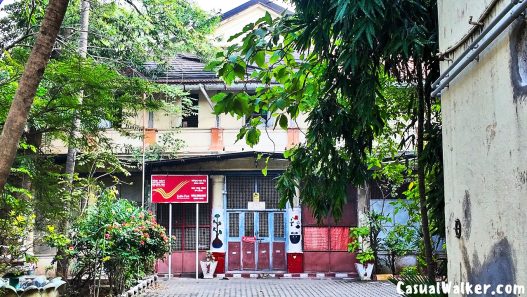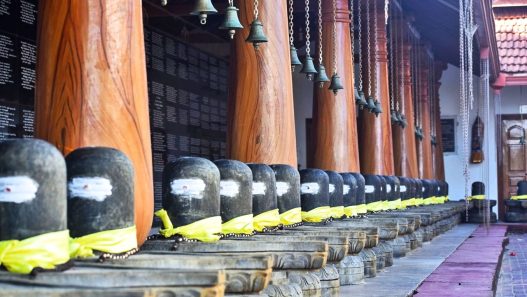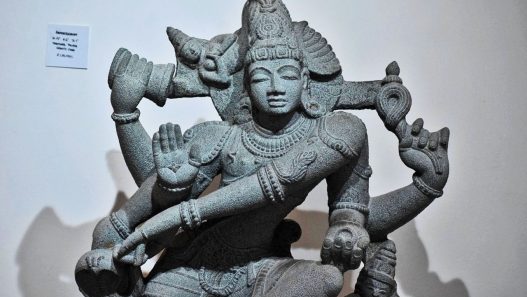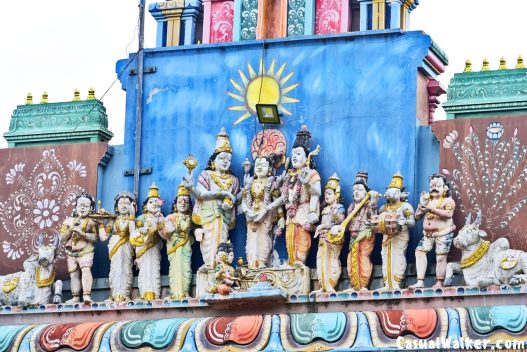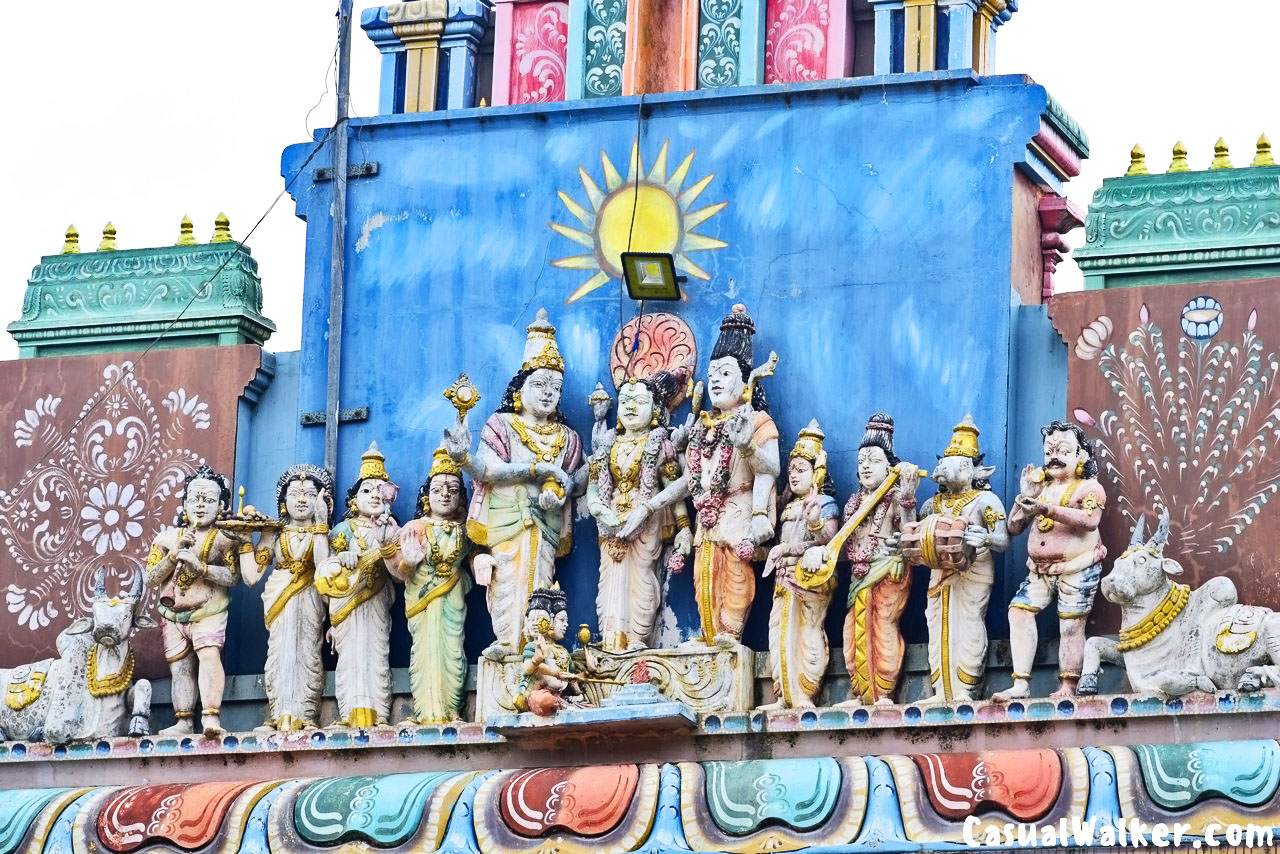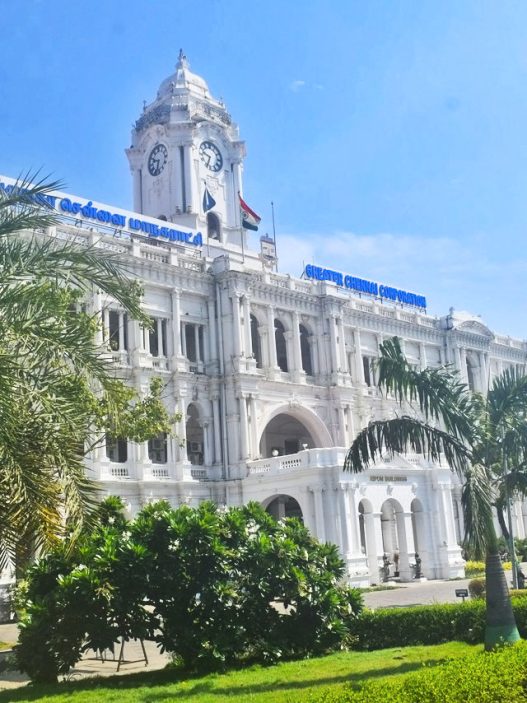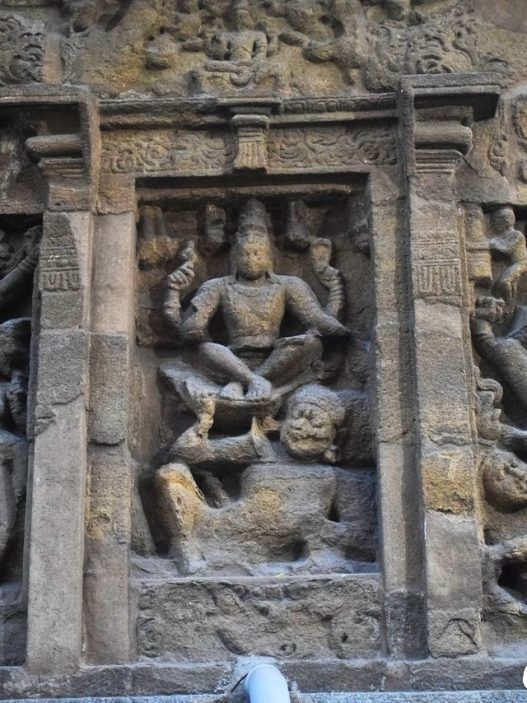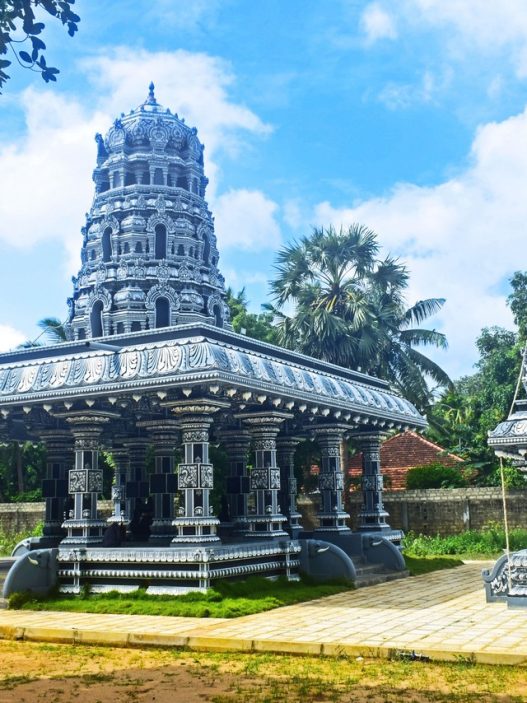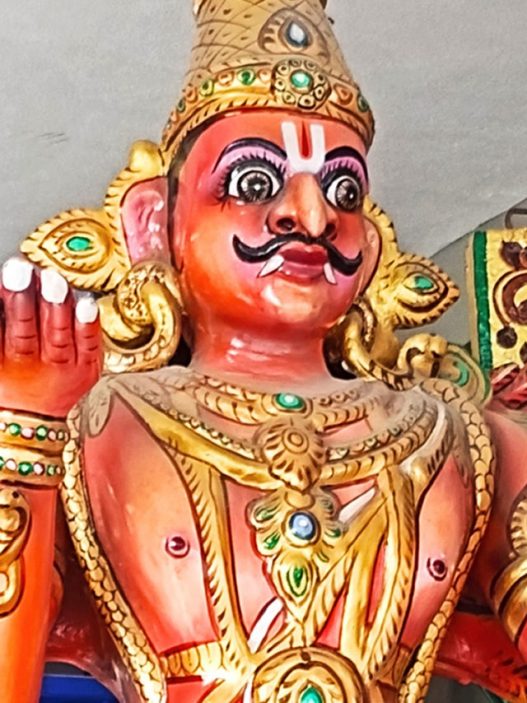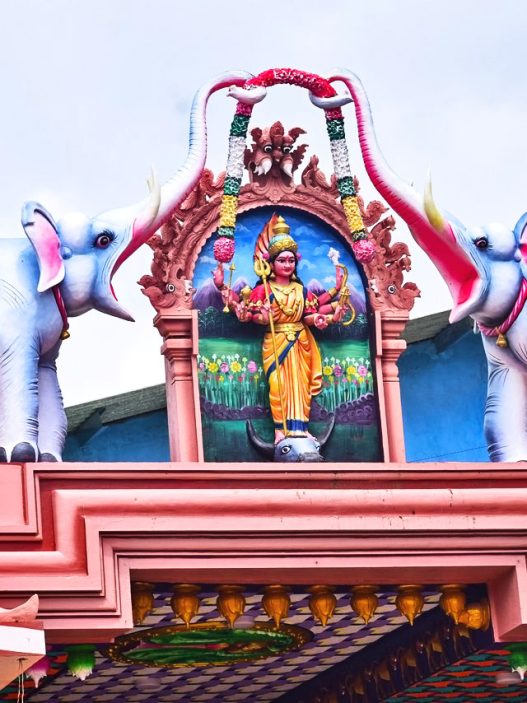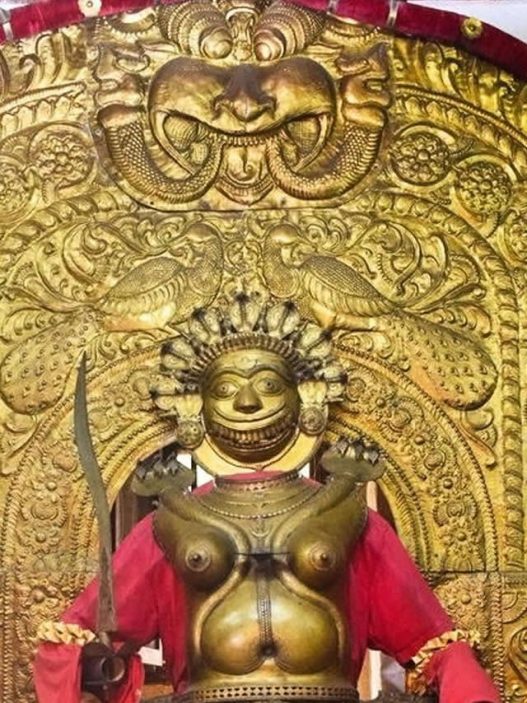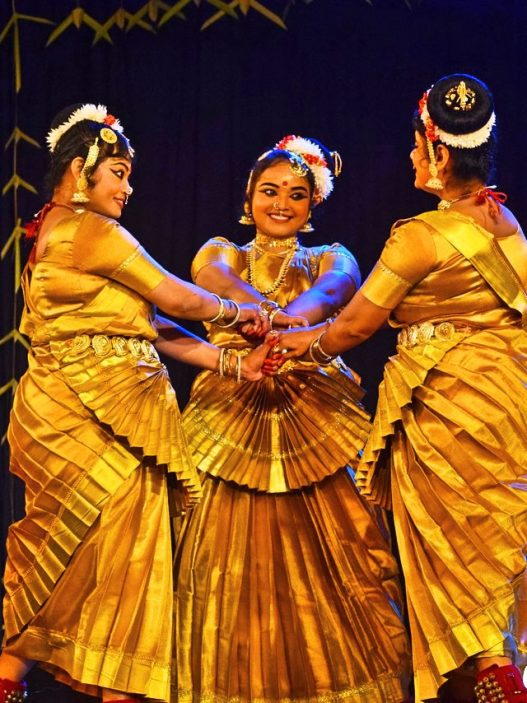Keerimalai Naguleswaram Temple in Jaffna / Thirutambaleswaram Kovil of Keerimala – One of Pancha Ishwarams & Oldest Lord Shiva Temple in Sri Lanka : Keerimalai Pond – A Ramayana Pilgrimage Location in Sri Lanka | Complete Travel Guide, History, Location, Timings & Best Time to Visit
– northern sri Lanka’s most sacred lord shiva temple & holy springs
Standing at the northernmost tip of Sri Lanka, where the Indian Ocean stretches endlessly toward the horizon, I found myself captivated by one of the island’s most ancient spiritual sanctuaries. The Keerimalai Naguleswaram Temple, an Lord Shiva temple in Jaffna is a living testament to faith’s resilience through centuries of triumph and tribulation. This temple is one of Sri Lanka‘s Pancha Ishwarams – Famous Five Lord Shiva temples.
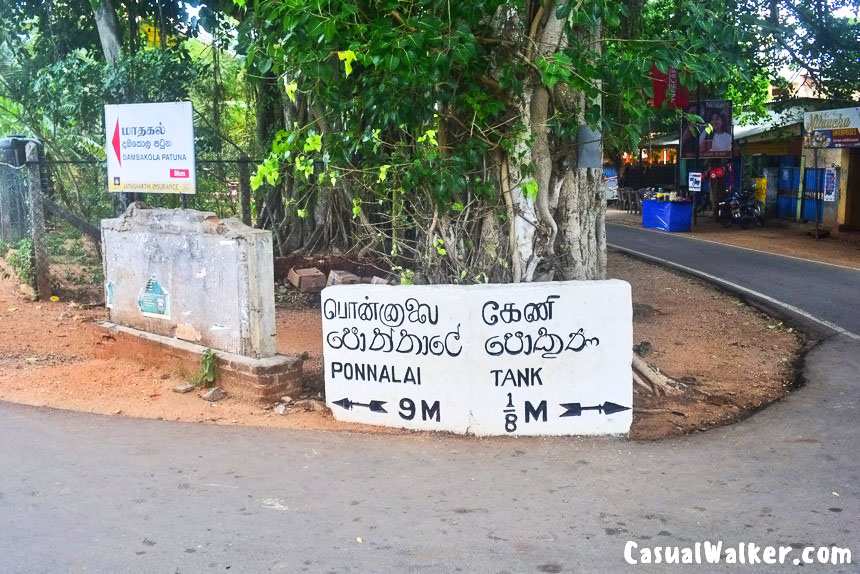
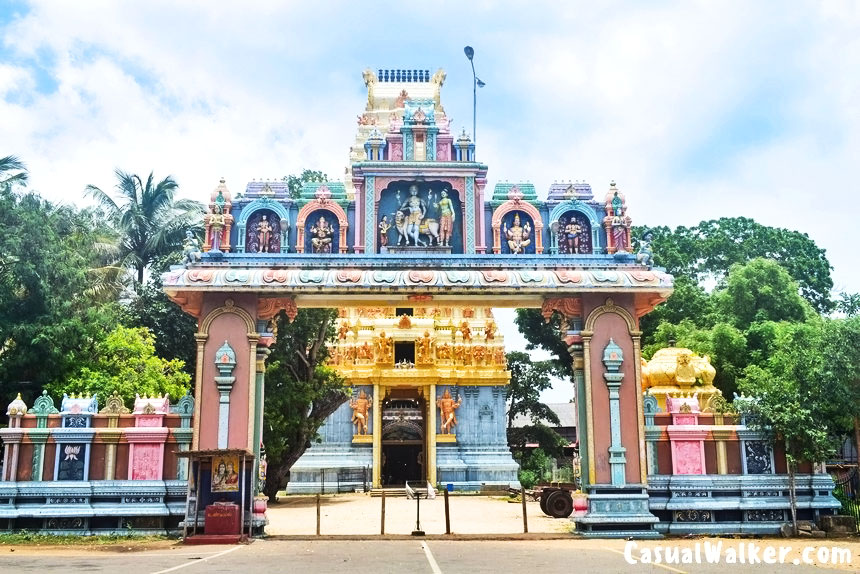
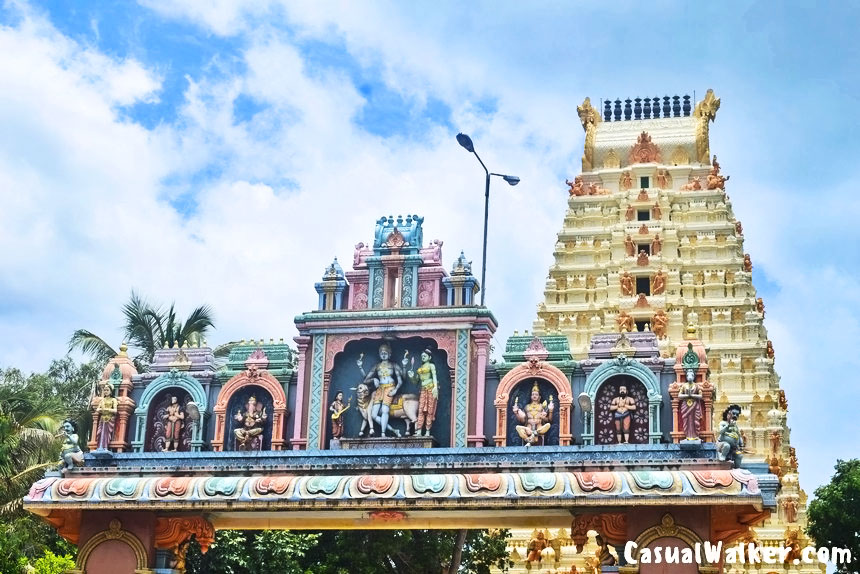
History of Keerimalai Naguleswaram Temple
The very name tells a story. “Keeri” in Tamil and “Nagula” in Sanskrit both mean mongoose, giving this place its evocative title: Mongoose Hill. According to ancient lore, the sage Nagula Muni once meditated in these coastal caves, his prolonged austerities leaving him with a mongoose-like face. When he bathed in the mineral-rich springs here, he was miraculously healed.
Overwhelmed with gratitude, he established a shrine at this blessed spot—the humble beginning of what would become one of Sri Lanka’s most revered temples. This temple is historically also known as the Thirutambaleswaram Kovil of Keerimalai.
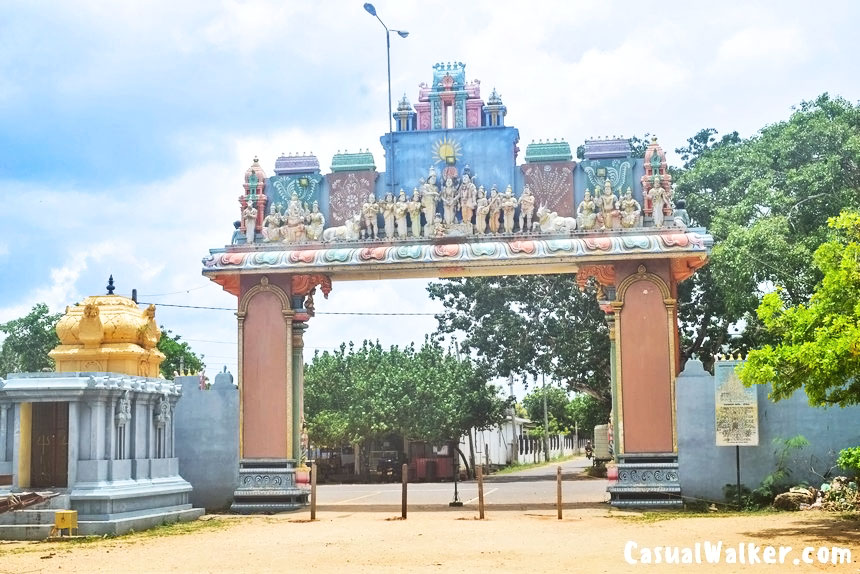
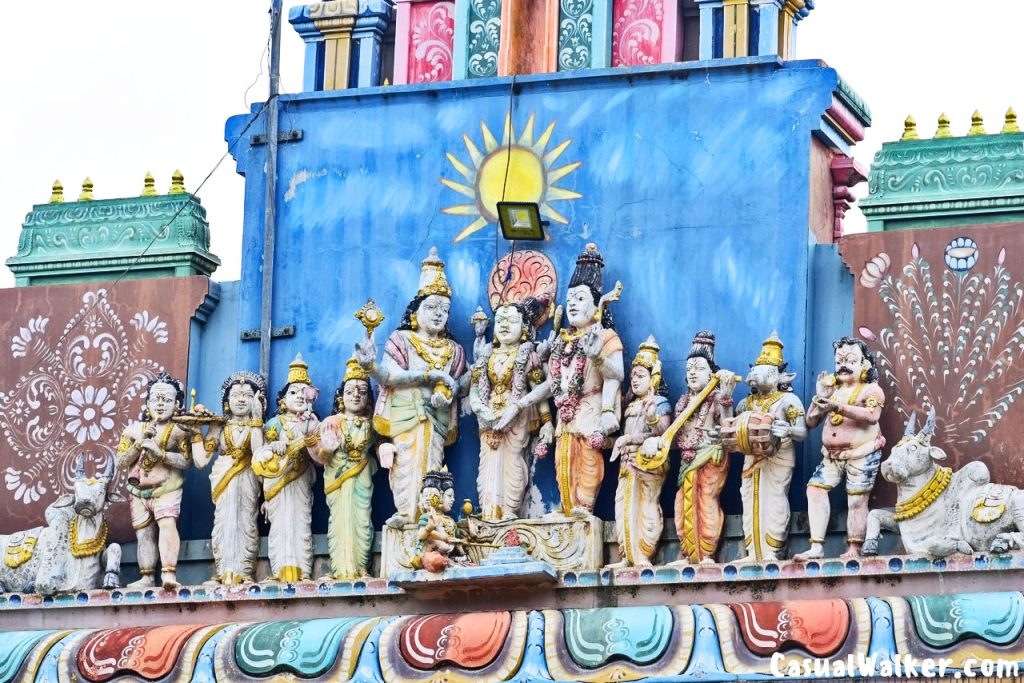
Sacred Significance of Keerimalai Naguleswaram Temple
As one of Sri Lanka’s Pancha Ishwarams—the five historic Shiva temples that form the island’s most sacred pilgrimage circuit—Naguleswaram holds a special place in Hindu cosmology. Ancient texts like the 6th-century Suta Samhita, part of the vast Skanda Purana, specifically names Naguleswaram among the subcontinent’s most ancient and venerated pilgrimage destinations, establishing its importance in early Shaivite tradition. Also the 15th-century Tamil saint Arunagirinathar composed his famous Thirupugazh hymns dedicated to the Lord Murugan worshipped here.
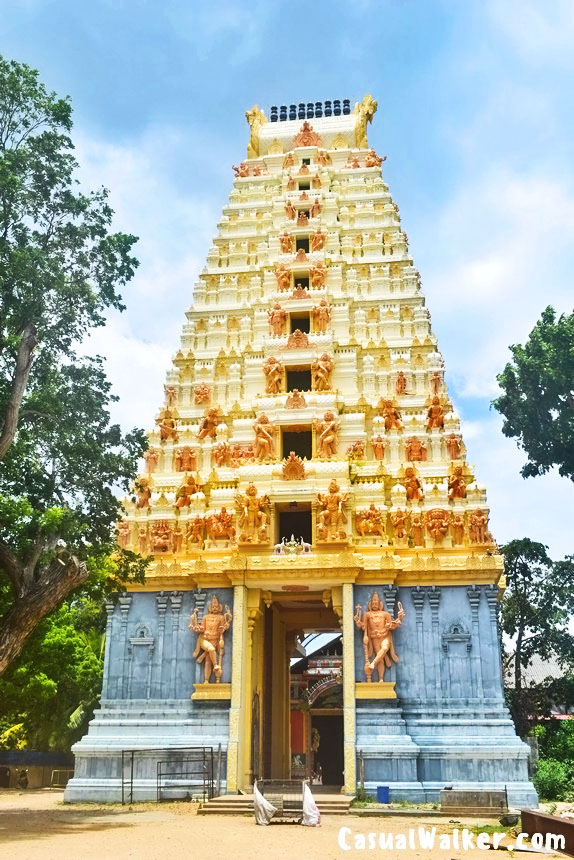
The Dakshina Kailasa Puranam, a Sanskrit treatise dedicated to Koneswaram temple in Trincomalee—another of Sri Lanka’s five revered Pancha Ishwaram shrines—contains detailed accounts of events that unfolded at Naguleswaram.
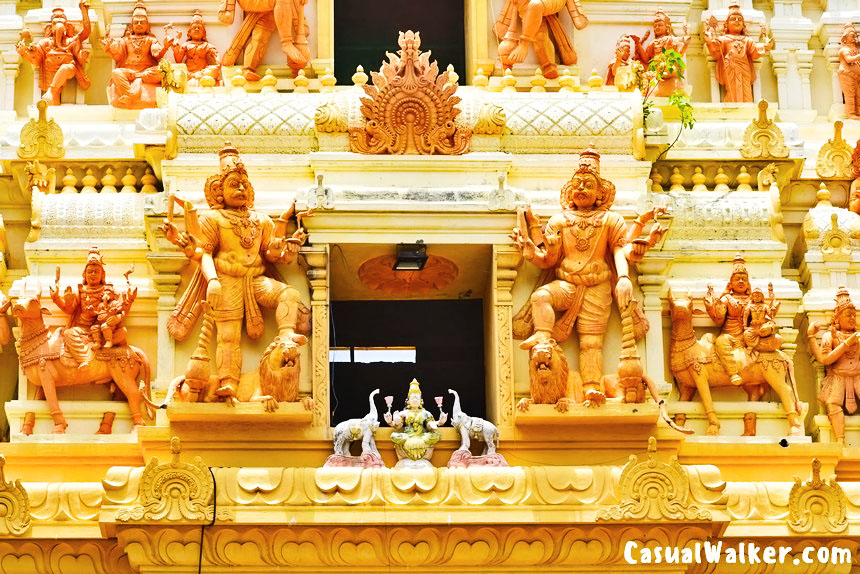
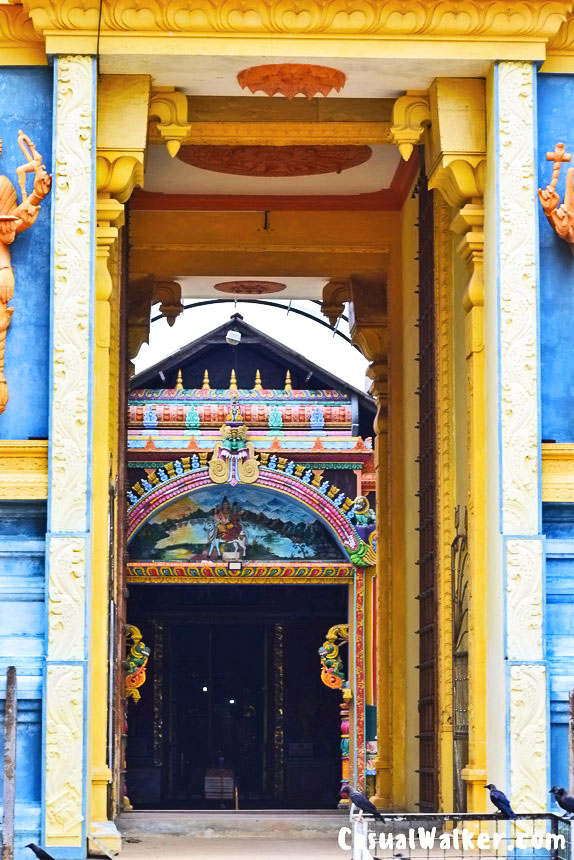
The temple faces east, following traditional Dravidian architecture, with a magnificent 9-tiered Rajagopuram greeting visitors. Inside, the presiding deity takes the form of a massive Shiva Lingam, crafted from what locals describe as an extraordinarily rare material that seems to emanate its own inner light.
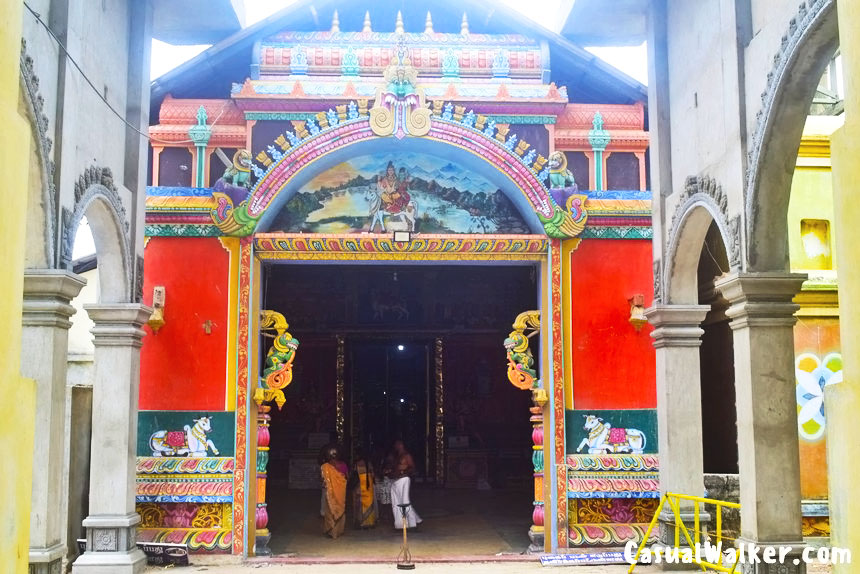
But legends layer upon legends here. The Yalpana Vaipava Maalai credits Prince Vijaya of Vanga (543-505 BCE) with an early restoration of the temple. Later, in 785 CE, Princess Maruthapura Veeravalli, after being cured of facial disfigurement by these same sacred waters, built the nearby Maviddapuram Kandaswamy Temple and married King Ukkira Singhan right here at the springs.
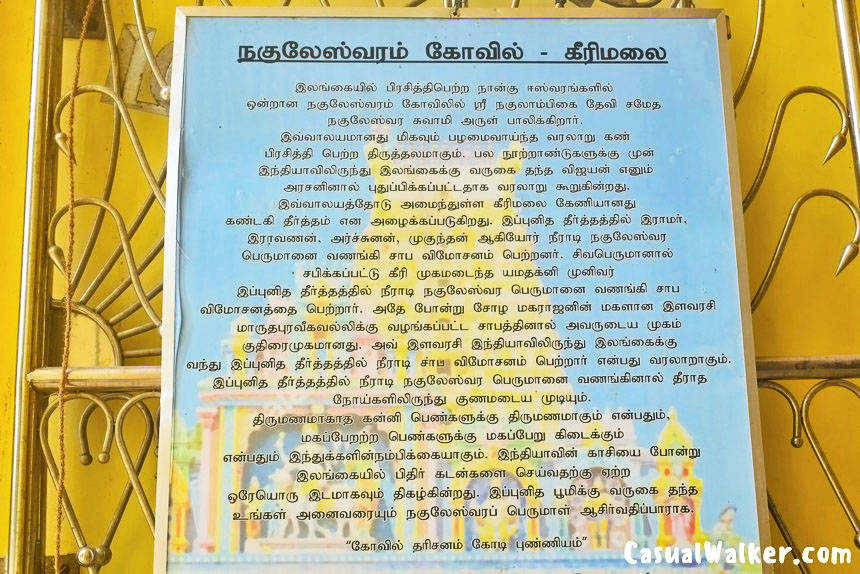
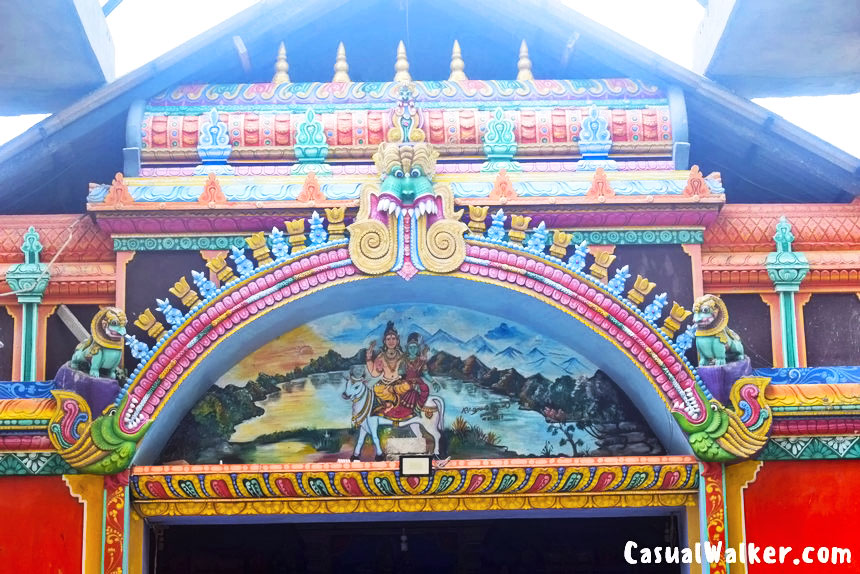
Destruction and Rising of Devotion
What struck me most profoundly was learning how this temple has risen from ashes—literally and figuratively—multiple times. The Portuguese invasion of 1621 brought the first major destruction, with Jesuit missionaries dismantling what had stood for over a millennium. Naguleswaram temple’s priests, in a desperate act of preservation, hid the sacred Temple’s Shiva Linga in a nearby well.
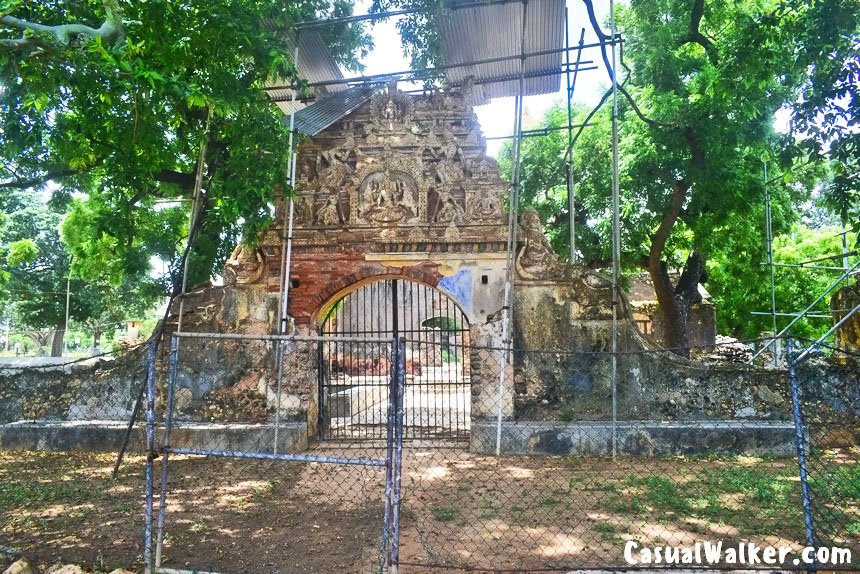
For nearly 400 years, the site lay dormant until 1894, when the great Hindu reformer Arumuka Navalar inspired the local Tamil community to rebuild. Today, a bronze statue of this remarkable reformer stands within the temple complex, a fitting tribute to the man whose vision brought this sacred site back to life. Navalar, often called the father of Tamil prose and a pioneer of Hindu reform in Ceylon, didn’t just restore buildings—he rekindled the spiritual flame that had been extinguished for centuries.
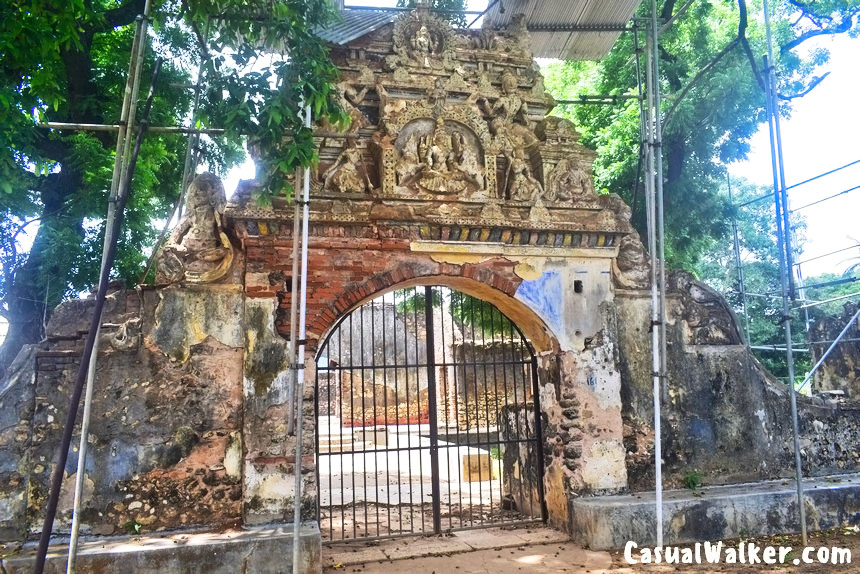
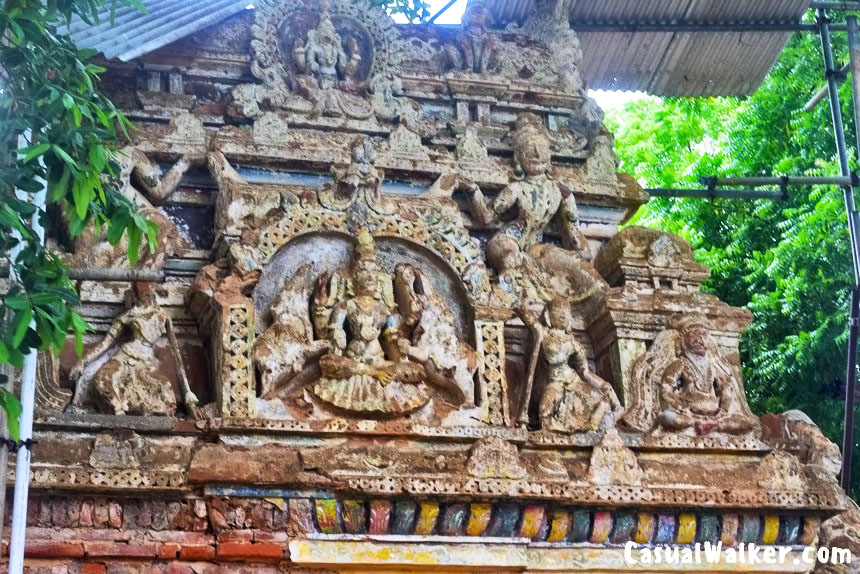
The current Keerimalai Naguleswaram temple, which reopened in 2012 after extensive reconstruction. Each carved pillar, each painted mural represents not just artistry, but an unbreakable spirit.
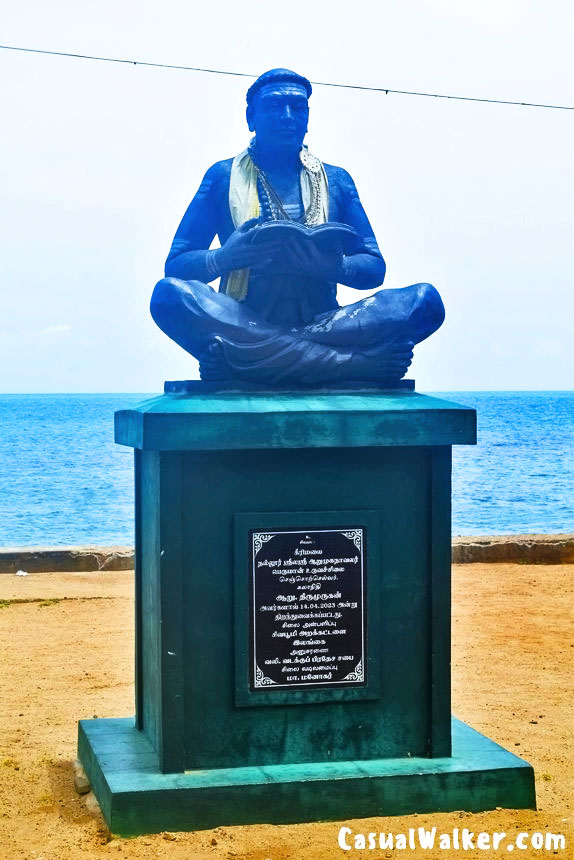
Keerimalai Pond – Sacred Tank at Keerimalai Naguleswaram Temple
Just steps from the temple lies what many consider the true heart of this sacred complex: the Keerimalai Springs and the holy bathing tank. These natural pools, situated 50 feet above sea level with only a wall separating them from the ocean, contain mineral-rich waters that geological studies confirm have unique therapeutic properties.
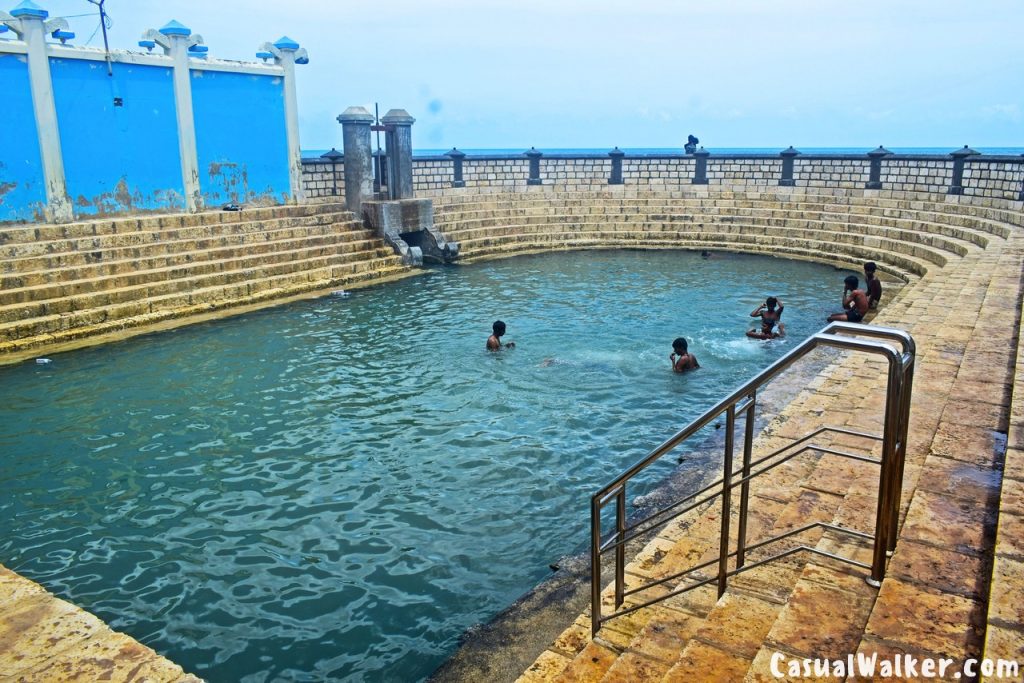
What makes this lake particularly significant is its connection to the great epic, the Ramayana. According to ancient texts and local tradition, Lord Rama himself sought purification in these very waters after his victory over the demon king Ravana in Lanka. Having slain Ravana — Rama carried the burden of the sin of killing him. The sacred waters of Keerimalai provided the spiritual cleansing that even the avatar of Vishnu required.
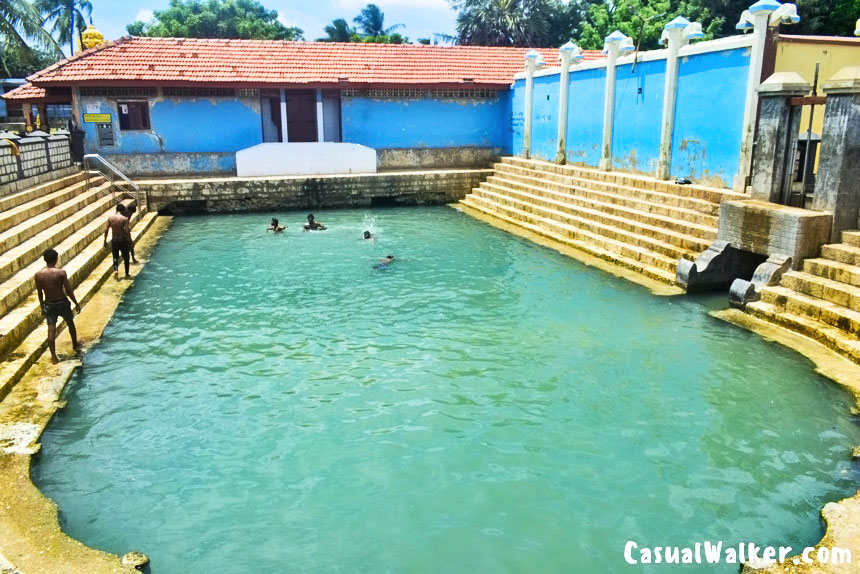
The springs are believed to connect underground with the famous Nilavarai bottomless well, located 10 kilometers away—itself another site of Ramayana significance. Despite being called “hot springs,” the water maintains a pleasant, cool temperature. The bathing tank, constructed adjacent to the natural springs, creates a perfect confluence where pilgrims can immerse themselves in waters sanctified by divine presence.
Festival Celebrations at Keerimalai Naguleswaram Temple
During the Aadi Amaavaasai festival in mid-August revealed the temple’s true spiritual power. The new moon, known as Amavasai in Tamil tradition, holds profound significance in the Hindu calendar. During the month of Aadi, astrologers tell us that the moon ascends through Kataka rasi while the Sun occupies the same celestial space—a divine union symbolizing the eternal dance of Shiva and Shakti. This cosmic alignment transforms Aadi Amavasai into one of the year’s most sacred days, when children honor their departed parents, particularly fathers, through ritual ablutions, priestly offerings (tharpanam), and temple visits.

The Maasi Magam festival is equally spectacular, drawing pilgrims who believe that participating in these ancient rituals brings blessings and spiritual purification.
As I stood watching the sunrise paint the temple’s gopuram in shades of gold, I realized that Naguleswaram represents something profound about human faith. This isn’t just a historical site—it’s a living symbol of how sacred spaces endure, how communities preserve what matters most, and how the human spirit finds ways to rebuild what others destroy.
Travel Tips for Keerimalai Naguleswaram Temple, Jaffna
Address: R276+9RH, Keerimalai, Kankesanturai, Jaffna District,
Northern Province, Sri Lanka
Distance from Jaffna: 25 km north of Jaffna
Nearby Landmark: Kankesanthurai area, adjacent to Keerimalai Sea
Phone: +94 217 900 470
Morning: 6:00 AM – 1:00 PM
Evening: 4:00 PM – 7:00 PM
Plan your trip so that you reach the temple only after 9 a.m. The priest of the temple does reach only then and opens the sanctum sanctorum
Tips for Visitors
Best Time to Visit: Early morning or late afternoon
What to Bring: Towels, change of clothes, waterproof bags
Respect: Maintain sanctity of the religious site
Photography: Ask permission before photographing people
Safety: Be cautious while bathing in the springs
How to reach Keerimalai Naguleswaram Temple, Jaffna
From Jaffna town, take the Palali Road and ask locals or army checkpoints for directions to Keerimalai. The site is easily accessible and well-known throughout the region. If you’re also planning to visit Dambakola Patuna Viharaya, the route passes directly by the pond.
By Road (Car/Bus) From Jaffna City:
Route: From Jaffna city, proceed towards the Kankesanturai main road. At the Maviddapuram junction, take the turn left on to the Keerimalai Road
Distance: Around 25km from Jaffna
Travel Time: About 30 minutes drive from Jaffna by car
By Bus Local Transport: You can arrive by local bus from Jaffna
Bus Route: Take buses heading towards Kankesanthurai and get off at Keerimalai
Frequency: Regular local buses operate throughout the day
Cost: Approximately LKR 50-100 (local bus fare)
By Private Vehicle: Parking: Available near the pond and temple premises. Well-maintained main road with clear signage
By Train: There is no direct train service to Keerimalai. The nearest railway connectivity is:
Nearest Station: Jaffna Railway Station
From Station: Take a bus or taxi for the 25km journey to Keerimalai
Train Services: Limited train services operate to Jaffna from Colombo
By Flight – Nearest Airport:
Jaffna Airport (Palali Airport)
Approximately 15-20km from Keerimalai
Airport Code: Not a commercial airport (military use)
Alternative: Bandaranaike International Airport, Colombo (then road journey to Jaffna)
From Colombo Airport:
Distance: Approximately 400km
Travel Options: Domestic flights to Jaffna (limited availability)
Road journey via A9 highway (6-8 hours)
Train to Jaffna + local transport


